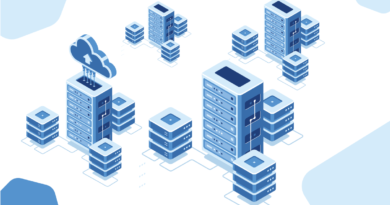What is Good Cloud Migration Security?
Cloud adoption continues to be important to many organizations as they change the way they do business in today’s digital world. While cloud adoption offers many benefits, the security implications of moving to the cloud cannot be ignored if businesses fully embrace it.
This blog describes the benefits of migrating to the cloud and the security challenges associated with the process. Plus, there’s a list of best practices for creating a robust cloud migration security strategy.
What is Cloud Migration?
Cloud migration is the process of moving an organization’s data and applications from on-premises servers to the cloud infrastructure. Cloud infrastructure gives organizations access to data storage and computes capacity requirements as they are needed.
Instead of building on-premises IT infrastructure or renting data center space, organizations can lease their cloud infrastructure and essential IT capabilities through third-party vendors. . This means savings in your organization’s operating budget by reducing spending on energy bills, IT staff, hardware, servers, and software required for a physical data center.
Agility and flexibility are other key benefits of migrating to the cloud. Cloud infrastructures are agile and flexible because they are self-managed and allow users to launch new services and make changes in minutes. This allows organizations to focus more on business issues and financial results instead of getting bogged down in IT issues.
Cloud platforms and infrastructure work through a process of abstraction, such as virtualization. The goal is to separate resources from the physical hardware they are normally installed on and place them in the cloud. These virtual resources are provisioned in the cloud using tools such as management and automation software, allowing users to access resources when they need them, wherever they work.
Three types of cloud architecture:
When we talk about cloud infrastructure, we’re referring to the tools that are used to build a cloud environment. When we talk about cloud architecture, we’re referring to the design or blueprint of specifically how the various technologies for creating a cloud computing environment will be connected. There are three types of cloud architecture:
- Public
- Private
- Hybrid.
Public cloud architecture uses third-party cloud providers to make cloud resources available to multiple customers via the internet. These providers operate multi-tenant environments that lower the cost of data storage and computing power for customers. Public clouds can have a drawback: privacy issues for organizations that handle sensitive data or personally identifiable information (PII).
In a private cloud architecture approach, cloud infrastructure is only accessed by the organization. The private cloud architecture can be built, developed, and maintained by a company’s own IT teams or delivered by external providers. Private clouds as their name imply address the drawback of the public cloud issue with privacy.
A hybrid cloud model is considered the best of both public and private architectures. The hybrid approach allows private and public cloud infrastructures to interact within a connected but separate system. This is ideal for organizations that handle sensitive information and PII, allowing them to store their critical data in private clouds while keeping fewer sensitive data in public clouds. With a hybrid cloud architecture, organizations can maintain their private environments while accessing all the benefits of public cloud services for other computing tasks and storage.
What are the security risks that come with cloud migration?
There are several security-related challenges that organizations must overcome in the process, including compliance breaches and malware. Because the cloud is ever evolving, some vendors will handle the changes well and some won’t. If a cloud provider goes out of business or has a dramatic overhaul, any enterprise using its services might be exposed to risk because of the upheaval.
Another cloud migration risk involves its reliance on the internet, meaning “any cloud solution is only as solid or reliable as the network connection it is built on.” It’s difficult for an enterprise and its users to accept downtime when apps and services aren’t accessible. Cloud infrastructures must have dependable connections and networks that are supported by service level agreements (SLAs).
A cloud migration security strategy must also consider that data controls are transferred from the organization to a cloud service provider. For the strategy to be effective, there must get buy-in from enterprise leaders. They need to accept the trade-off of getting cloud computing benefits while having less or limited control over access to applications, data, and any server-based tools.
Recently, a cloud survey showed some of the concerns about cloud migration from IT leaders mentioning a lack of visibility, high cost, lack of control, and lack of security as the biggest unforeseen factors that slow or stop cloud adoption.




